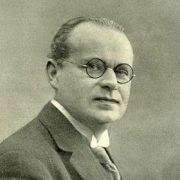 |
| Source: Davar, Feb/ 9th, 1951, p. 22 |
An interesting overview of the opening ceremony of the 1st Israeli championship, 1951, was brought to our attention by
Ami Barav, whose father,
Israel Rabinovich-Barav, was one of those involved in organizing it.
There were three speakers:
Pinchas Rosen, minister of Justice, who noted that the reason there was no Israeli team sent to the 1950 Olympiad in Yugoslavia (in
Dubrovnik) was that the requested funding - 100 Israeli pounds was not approved. (This comes out to roughly $350 in today's USD, which seems very little, but such historical comparisons are problematic.)
He noted 'humorously' (says
Davar) that he was
happy to hear of the treasury's rejection of the requested funding, since it was 'proof' there is no
protekziya (favoritism, nepotism) in the government decisions: even his own attempt to influence the treasury to fund it was to no avail. He also noted he always had a 'unrquited love affair' with chess -- he loved chess ,but chess did not love him, to judge by his playing level.
Then spoke prof.
Tur-Sinai about 'the character and essence of the game of chess', adding that he brought with him a special prize -- a book of short brilliancies -- to the winner of the shortest game.
Finally spoke the minister of education and culture,
David Remez, also a chess player. He (inevitably) noted that Jewish chess players are 'equal in importance to all non-Jewish players together', and added that the Israeli Chess Federation will 'concentrate on Israel's part in the field of chess' -- which, adds
Davar, was a very diplomatic way of speaking, as he didn't promise anything concrete...
Finally a game from the tournament was given on the same page, as 'a serious contender' to Tur-Sinai's prize:
Braun -
Glass,
Israeli Championship, 3rd rd. Feb. 1951.
Two Knight's Defense [C56]
Annotations:
Davar unless otherwise noted.
1. e4 e5 2. Nf3 Nc6 3. Bc4 Nf6 Each side threatens the others' weakness, f7 and e4, respectively.
4. d4 exd4 5. O-O For a pawn, White gets good chances for a strong attack.
Nxe4 6. Re1 d5 7. Bxd5 Botvinnik played here 8. Nc3 immediately.
Qxd5 8. Nc3 Qh5 More aggressive than the usual 8... Qa5.
9. Nxe4 Be6 10. Neg5? Rushing to regain the pawn. 10. Bg5! is more aggressive.
10... O-O-O! 11. Nxe6 fxe6 12. Rxe6 Bd6 Black overtook White in development.
13. Qe2? 13. h3 is necessary.
13... d3! 14. Qe4 14. Qxd3? Bxh2+ winning the queen; 14. cxd3? Nd4 threatening h2
. 14... Nd4! 15. Rxd6 Forced; the bishop is too dangerous.
15... Rxd6 16. Be3 [Of course not 16. NxN? Qd1+
with mate next move - A. P.]
16... Nxf3+ 17. gxf3 Re8 18. Qf4 Rg6+ 19. Kh1 Qh3 20. Rg1 dxc2 Threatening 21.... RxR+ 22. KxR cq=Q+ 23. BxQ Re1#
21. Rxg6 hxg6 Repeating the same threat.
22. Qc4 b5! Now White cannot defend both c1 and f1; he resigned
(
0-1).











